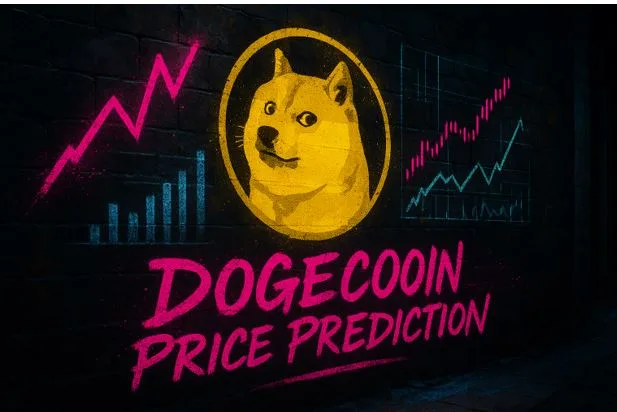The Future of Candidate Screening: Faster, Smarter, Bias-Free
Hiring decisions always carry weight.. A single selection can strengthen a team, shift the culture, or at times even stop or derail progress altogether.
For years, the standard approach of sorting through, shortlisting candidates under the pressure of time, and running interviews in batches was the norm because there was no option. But today, these methods are creaking under the pressure of tech-first demands. Too many applications arrive at once, candidate expectations are higher than ever, and companies are being judged publicly on how fair and fast a hiring process looks.
You might ask, “Can we really deliver speed, fairness, and the human touch all at once?” That question is exactly why candidate screening is now at the center of change.
Why Candidate Screening Processes Need a Rethink
Recruiters talk about the flood of applications as if it were a natural disaster. For some roles, 400 CVs might arrive within a week. In certain industries, it is easily over a thousand. The idea of scanning all by hand is unrealistic, and yet many teams still try. What often happens is that qualified people slip through unnoticed, while hiring managers complain about delays. By the time the “ideal” candidate is identified, that person has already signed with a competitor.
Consistency is another sore point. Two different recruiters can look at the same CV and focus on completely different aspects; one gives attention to the brand names on the résumé, the other can be more inclined to look at hands-on skills. Both these views have merit, but when the stakes are high, this inconsistency causes risk of bias, often unintentional but damaging all the same. Names, accents, even the formatting of a résumé can influence decisions far more than anyone wants to admit.
The problem is that candidates are not passive participants in this story. They expect recruiters to give timely responses, be transparent about next steps, and receive a confirmation that their application is actually being seen. Long silences or generic rejections create frustration. Worse, these tactics can completely erode the employer brand, because one annoyed candidate can quickly broadcast their experience online. In this scrutinizing environment, screening is no longer a back-office task — it becomes a public-facing element of reputation management.
The Rise of Smarter Screening Tools
The emergence of smarter, more contextual AI tech in recruitment is enabling faster, more structured hiring decisions and changing how hiring is done. Instead of just automating administrative tasks, AI is reshaping how decisions are framed.
Résumé parsing is a good example. Rather than relying on a recruiter to scan every line, AI systems extract key data within seconds, including qualifications, projects, achievements, and even context. Instead of just spotting the word “project management,” the system can read whether the person actually led a team or simply supported one. Skill-matching engines then align the applicant’s profile against job requirements in a structured way.
This doesn’t eliminate the recruiter. It creates a first layer of order, an objective shortlist that saves time and avoids fatigue-driven errors. A recruiter facing 600 applications for one marketing role suddenly has a manageable set of 30 to explore more deeply. That means less energy is drained on mechanical filtering, and more energy is spent on assessing fit, motivation, and potential.
There’s another angle —consistency. With set criteria applied equally, the variation between recruiters narrows. Of course, the human eye still matters, but the foundation is steadier. It’s not “I liked how this looked,” but “this scored high on skills we agreed on.” In practice, it feels like moving from guesswork to structured judgment.
The Bias Question: Can AI Do Better?
Bias is the shadow that hangs over every AI conversation. The worry is clear: if the data fed into a model reflects past prejudice, then the system will only reinforce it. If historically certain universities or genders were preferred, won’t the AI carry that same preference forward? The concern is not misplaced.
Here lies the nuance. Unlike a human reviewer, algorithms can be told to ignore certain markers. Names, photos, and ages are removed. Instead, the model focuses on skills, qualifications, and results. Structured scoring frameworks reduce the sway of gut feelings. In other words, the rules of the game can be designed to center on merit, not perception.
That does not mean bias disappears automatically. HR teams have to monitor the outcomes continuously. For example, if data shows that shortlisted candidates are disproportionately from one group, alarms should go off. Transparency is vital. If a system cannot explain why candidate A was ranked higher than candidate B, then trust collapses. Regulators are already paying attention, especially in Europe and North America, where explainability and fairness are moving from “best practice” to “legal requirement.”
So, does AI actually help here? It can. But only if HR leaders treat it as technology that needs constant governance, not a magic wand. The real progress comes when structured intelligence is combined with conscious oversight.
Finding Speed Without Losing the Human Touch
A recruiter once put it bluntly, “If the machine screens, will candidates feel they’re just another file?” That fear is real. Recruitment has always been about relationships, about people sensing whether they belong in a workplace.
Interestingly, smarter tools may free recruiters to be more human, not less. If hours are not wasted sifting through endless résumés, that time can be invested in real conversations. Recruiters can focus on explaining roles, clarifying doubts, or understanding what truly motivates a candidate.
Automated updates keep candidates in the loop: “your profile is being reviewed,” or “you’re moving to the next stage.” At the same time, recruiters gain bandwidth to send personalized outreach instead of templated notes. So paradoxically, while AI handles the repetitive mechanics, candidates may feel more seen and heard than before.
Preparing for What’s Next
The next two years will not look like the past two. Agentic AI and predictive analytics are moving fast. Instead of waiting for candidates to apply, systems will proactively suggest potential matches from wider talent pools – including professionals who are not actively job-hunting. Screening will stretch beyond the simple funnel into a broader talent-mapping exercise.
You may be wondering, what should HR leaders do now? The answer isn’t to rush and buy every new tool. Instead, start with careful pilots. Test one or two AI-driven platforms, track impact on speed and quality, and gather feedback from recruiters and candidates.
Next, put bias audits into your regular cycle. Once a year isn’t enough; the checks must be continuous. Vendors, too, need to be questioned hard: How do they ensure explainability? What security standards are in place? Finally, invest in your employees. A tool is only as effective as the team that knows how to challenge and interpret its results.
Organizations that succeed will not see AI as a quick plug-in. They will treat it as a system in motion — adjusted, governed, and refined as laws, markets, and expectations change.
Final Thoughts
AI in candidate screening and acquisition is stepping into a future that is faster, more precise, and potentially more fair. The aim is not to replace recruiters with code. The goal is to let recruiters focus on what cannot be automated — empathy, judgment, and conversation.
Skepticism will remain, but that’s healthy. Technology that touches people’s lives should always face scrutiny. But when HR leaders balance structured intelligence with the human ability to listen and adapt, the result is better hires, stronger trust, and a hiring process that finally keeps pace with the demands of the modern workforce.



